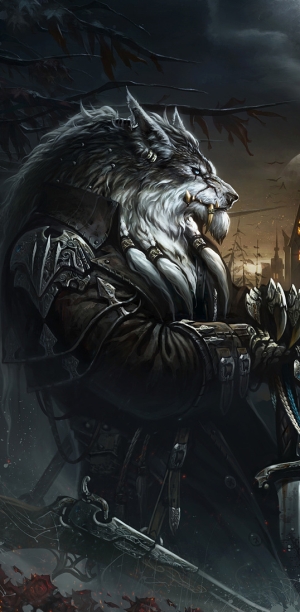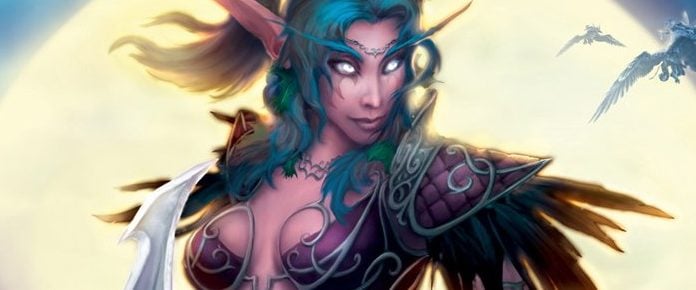
Here’s something a little different: Usually, before I write a World of Warcraft column (or any column), my assumptions and data are pretty firm before I put them down on paper, else I wouldn’t be writing it in the first place. This is one of the reasons that, for example, I spent so much time showing my work when trying to predict the launch date for Battle for Azeroth; that was all about hard numbers, so it was easy to check math and assumptions in an obvious fashion.
But in this particular case I’m exploring a concept that I’m still playing with and researching, something that may turn out to be somewhat erroneous. To wit: I suspect World of Warcraft expansions have switched from selling to existing customers and into reclaiming old customers as a primary design focus.
It might seem like an odd assertion, but I think it’s an interesting thing to consider and may help shed light on a number of design decisions, several of which I think are pretty bad ones. But for this particular column I’m not interested in analyzing the merits of design choices; I’m interested in presenting the evidence and showing how it lines up in a more neutral fashion. Because I think it can shape some interesting thinking.
First of all, let me make one thing clear: Beyond a certain point, any and all discussion of subscription numbers for WoW is purely speculative because Blizzard stopped giving out subscriber numbers. This is for obvious reasons because the game has remained profitable despite reduced numbers, and there’s a whole lot of analysis to be done about that when the game doesn’t really lean heavy into its cash shop. There’s even a dearth of cosmetic armor there, which is usually a mainstay; new releases on the cash shop are rare and usually specific mounts or pets, often with charity donations. But the company has stopped believing that subscriber numbers are a good thing to release.
As part of a report delivered to investors to assure them that yes, all is well in terms of return on investment, this is a reasonable decision. As something analysts like to examine, this is horrible because it means guessing about the numbers beyond a certain point. Knowing the line of overall subscriptions through Legion would be super helpful, but we’re guessing.
However, I think things work just fine with the line that we do have, and the lack of new subscriber numbers tends to indicate that the trend has remained consistent or at least did not reverse.

So let’s start with something that everyone knows, which is also a matter of public record. From its launch in November of 2004 through the early launch days of Cataclysm in 2011, WoW literally never dropped its numbers. Every new announcement from the company was either maintaining the same numbers or announcing another new benchmark. It was only during Cataclysm that numbers actually started to drop.
This is not to say that no one unsubscribed from WoW during that time; speaking purely from anecdotal experience I know that I did at least two times, other people also did, and logically speaking you would assume some churn. The result is that it’s hard to guess how many people have actually played the game in total over time, but the number is almost certainly higher than the game’s peak of 12 million.
Why does the total matter? Because of market saturation.
Market saturation is essentially the point wherein your overall market share is just not going to grow any longer for anything. People know your product exists and either have chosen to buy it, have chosen not to buy it, or have stopped buying it. This is also the point where trying to catch new customers is no longer worth the effort, because you’re chasing people who are just never going to buy in.
For assorted reasons, WoW didn’t hit saturation until after the launch of Cataclysm, but it certainly does seem to have hit that point then. From that point onward, the game’s numbers, or at least the ones we know about, have gone up and down, but they’ve never actually grown beyond 12 million. Again, it’s almost certain the actual number of total players over time is higher, but we don’t have access to that statistic.
Purely for argument’s sake, let’s say that there were exactly as many former players as current players at that time, which would make the market saturation point 24 million. This is, again, a totally arbitrary and speculative number; it could be 20 million, 100 million, or 12.5 million. It just places that at a good middle point.
 The point is that by the time we start seeing drops in Cataclysm, we can make the assumption that WoW is a known quantity. Everyone who is a potential player is either currently playing or a former player. And as the numbers slide down, it seems like there’s an obvious shift in focus for expansions, marketing less to the people already playing and more to the people who were playing and left.
The point is that by the time we start seeing drops in Cataclysm, we can make the assumption that WoW is a known quantity. Everyone who is a potential player is either currently playing or a former player. And as the numbers slide down, it seems like there’s an obvious shift in focus for expansions, marketing less to the people already playing and more to the people who were playing and left.
Marketing for Cataclysm played this up a little, with the old world revamp and the exploration of places long visible but not accessible in the game. But it clearly wasn’t a major focus because most of these things required knowledge of the game to begin with. You had to be pretty invested in the game to remember Uldum or Grim Batol; they were areas referenced but never seen in the base game. Improvements to the leveling zones made the experience smoother but were clearly touted as something to remove the tedium and design issues for people who had leveled through this many times before.
In Mists of Pandaria we also got a nod to the long-running issue of the Pandaren, who had been used as a background element in the franchise for ages without ever being strictly explored. Still, though, it seems that this expansion was far more marketed at people who were already playing rather than potential returning players.
But then we have Warlords of Draenor, which did two things to really push hard at players who used to play and left. The first was the inclusion of a very well-known region redone and re-imagined, along with a cast list that lots of players likely had dim memories of. You might not remember exactly what their deals were if you were never into the lore, but you know that, say, Gul’dan and Grom Hellscream were important. You know that Outland used to be Draenor. (And you possibly still call it “the Outlands” or “Outlands” or “Stevetown” or some other name that’s completely wrong.) All of this stuff aligns nicely with fuzzy memories.
The other shift? The level boost. Not only can you hop back in with those fuzzy memories, you can do so without having to go through the process of catching up. The game will catch you up and drop you into the experience right away!
From a marketing perspective, this worked like a charm. Subscriptions jumped by nearly 3 million between the end of Mists and the launch of Warlords. People came back! Admittedly, the game’s next month saw another subscription drop that was actually lower than the nadir of Mists, but from the standpoint of reclaiming people in that departing group? It worked, albeit temporarily.

Subsequently, Legion and Battle for Azeroth have both leaned in on this. Legion contained artifacts, several of which occupy that fuzzy memory space (“yeah, the Ashbringer was a big deal, right?”), and it also contains zones that seem to be functionally designed as WoW’s Greatest Hits. People like Tauren, so here’s a Tauren zone. People like druids, so here’s the druid zone. Remember that whole storyline about Blood Elves withering away without magic? The Nightborne hit that same story beat-for-beat, without ever tying it to factional conflict (that would come later).
And Battle for Azeroth? Please note that while the Allied Races introduced as pre-order bonuses are races that you would be familiar with only if you’d been playing the game at the time, the ones coming with the expansion are right back into that fuzzy memory space. You remember Dark Iron Dwarves and Zandalari Trolls and Mag’har Orcs and something about Kul Tiras, right? You might not remember exactly what their deals were, but you can play them now and you get a level boost to catch right back up. Vague memories propel you back.
Whether or not this is a good thing is a discussion for another day, but I think this adds an extra dimension to discussion of standalone expansions and to understanding overall design decisions. There are a number of choices going on here that make perfect sense if you think about the developers are not trying to court new players or existing ones but trying to recapture players who did play at one point and are curious to come back. And letting them do so without having to catch up? There’s a reason for that, too.
Feedback, of course, is welcome down below or via mail to eliot@massivelyop.com. There’s a lot more analysis to be done here and discussion about where good and bad decisions come into play, but as stated the point here was to present the concept rather than dissect it. Putting everything into this framework explains a lot of decisions, even if it doesn’t make them right.
 War never changes, but World of Warcraft does, with a decade of history and a huge footprint in the MMORPG industry. Join Eliot Lefebvre each week for a new installment of WoW Factor as he examines the enormous MMO, how it interacts with the larger world of online gaming, and what’s new in the worlds of Azeroth and Draenor.
War never changes, but World of Warcraft does, with a decade of history and a huge footprint in the MMORPG industry. Join Eliot Lefebvre each week for a new installment of WoW Factor as he examines the enormous MMO, how it interacts with the larger world of online gaming, and what’s new in the worlds of Azeroth and Draenor.














